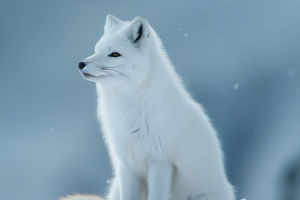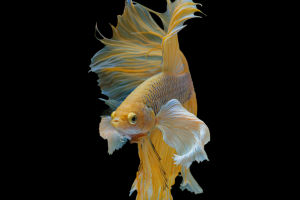Kangaroos, as the national treasure of Australia, are not only emblematic animals featured on the country's coat of arms but are also widely beloved mammals across the globe.
Whether it is due to their unique appearance or their close connection to the Australian natural environment, kangaroos have long captivated people's interest.
This article will delve into the kangaroo's lifestyle, physiological characteristics, ecological role, and relationship with humans.
1. Lifestyle
Kangaroos are herbivorous animals, primarily feeding on grass, leaves, and shrubs.
Most of their activities take place at night or during the early morning and evening hours, a habit that helps them avoid the high daytime temperatures. Kangaroos typically live in small groups, and in areas where food resources are abundant, these groups can number in the dozens.
Kangaroos move primarily by hopping, with strong hind legs that are well-suited to Australia's arid, open grasslands. Their tails are also powerful, helping them maintain balance while hopping. On flat ground, kangaroos can cover 3-5 meters with each jump, and at top speed, they can exceed 50 kilometers per hour.
Kangaroo reproduction is also unique. As marsupials, kangaroo joeys are born at an embryonic stage and continue to develop in the mother's pouch. The joeys rely heavily on their mother's milk while in the pouch and remain there until they are strong enough to leave.
2. Physiological Characteristics and Adaptations
Kangaroos' physiological structures include many unique adaptations to the Australian environment.
Firstly, their large hind legs allow them to hop efficiently, a movement that is more energy-efficient than quadrupedal walking. Secondly, their stomach structure differs from that of other mammals; similar to ruminants, kangaroos can more effectively digest fibrous foods.
In environments where water is scarce, kangaroos can conserve water by reducing urination and minimizing sweat. Additionally, their thermoregulation mechanisms are highly advanced. Kangaroos can lick their forearms to increase evaporative cooling, thereby lowering their body temperature.
3. Role in the Ecosystem
Kangaroos play an important role in Australia's ecosystem. As one of the primary herbivores, kangaroos are key to maintaining the balance of grassland ecosystems. They help control the overgrowth of vegetation by grazing and also serve as a food source for various predators.
4. Relationship with Humans
Kangaroos hold a significant place in Australian culture. They are not only symbols on the national coat of arms but also major attractions in the tourism industry. Whether in wildlife parks or nature reserves, observing kangaroos has become an essential experience for visitors.
However, the relationship between kangaroos and humans is not always harmonious. With the expansion of human activities, kangaroo habitats have been threatened, particularly in agricultural areas where kangaroos are sometimes considered pests due to their potential to damage fields and crops. Additionally, kangaroos frequently appear on Australian roads, leading to traffic accidents.
To balance the relationship between kangaroos and humans, the Australian government and relevant organizations have implemented various management measures. These include establishing protected areas, promoting sustainable hunting practices, and raising public awareness of kangaroo conservation through education.
Conclusion
As symbolic animals of Australia, kangaroos exemplify the marvels of biodiversity and natural adaptation. They are not only crucial members of the ecosystem but also a model of harmonious coexistence between human culture and nature.
Although kangaroos face challenges from human activities, through scientific management and conservation efforts, we can ensure that this unique species continues to thrive in the future.


